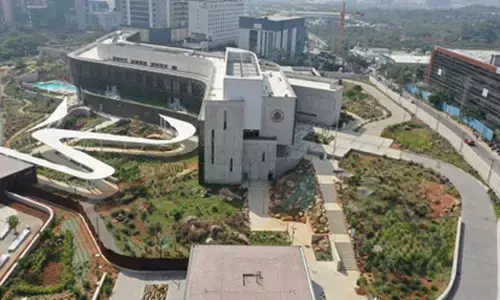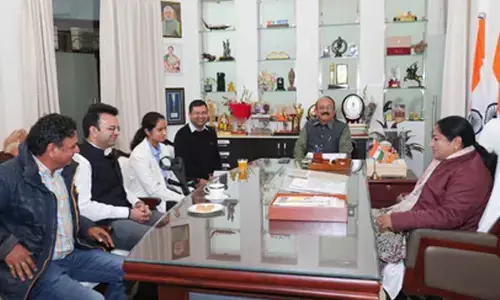CA turned 'Millet Star' ushers in millet revolution

K V Rama Subba Reddy in his millet plant
K V Rama Subba Reddy, an MBA post-graduate and a Cost Accountant settled in Delhi serving as finance director in an MNC, hails from a remote village of Jillella in Banaganapalle mandal in Nandyala district
Anantapur: Cost Accountant turned 'Millet Star' as Indian Council for Agriculture Research (ICAR) called him, ushered in a silent millet revolution which attracted the attention of no less a person than Prime Minister Narendra Modi, who made a mention of K V Rama Subba Reddy in his 'Man Ki Bath' programme.
As the man, who is an inspiration to many as a campaigner, educator, cultivator, processor and exporter of millets.
Hailing from a remote village of Jillella in Banaganapalle mandal in Nandyala district, Subba Reddy, an MBA post-graduate and a Cost Accountant settled in Delhi serving as finance director in an MNC before he took to agriculture in 2017.
His love for rural life, agriculture and millets brought him back to square one, his native village. Moved at the plight of farmers and farmers' suicides in his native district and elsewhere due to failing crops and uncertain monsoon and farmers resignation to agriculture operations that have turned out to be a losing proposition, he launched out as a campaigner for millets cultivation and started creating awareness on millets and its health benefits.
Inspired by millets crusader Khader Valli, he too started producing millets in his 40-acre land in his village. He grows nine varieties of millets including sorghum, foxtail millet, finger millet, bajra, red gram, bengal gram, sunflower and castor crops.
Subba Reddy told The Hans India that he had been organising several workshops for farmers tying up with Agri university, ICAR, IAMR and with Regional research institutes to impress upon the new generation farmers on the need to shift to low cost crops in view of water and profitability issues dogging farmers. He had been paying a decent remunerative price of Rs 3,500 per quintal to Rs 4,000, whereas the government announced MSP to some millets is Rs 2,500 per quintal. Swamy Naidu, a millet farmer supplying millets to Subba Reddy from Kalyandurg mandal in Anantapur, said that he is more than happy with the profitable price of Rs 3,500 per quintal being paid to him. Millet cultivation provides farmers more economic stability than commercial crops. One of the reasons for focusing on millets cultivation, seed production, value added millet products is due to less water requirement, less incidence of pest and disease and low cost of cultivation.
The aggressive millets campaigner filled the gap by establishing his own processing plant at Anupuru village to process all millet varieties such as cleaning, grading, gravity and dehulling. The unit took millets trade to new levels of exporting to the US and other European countries.

















